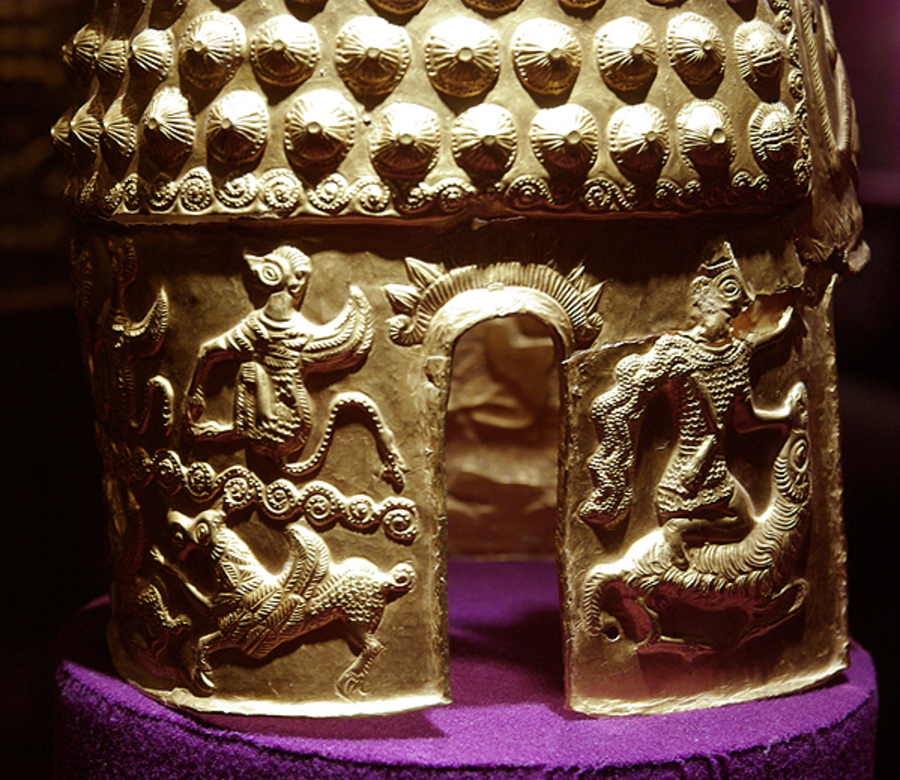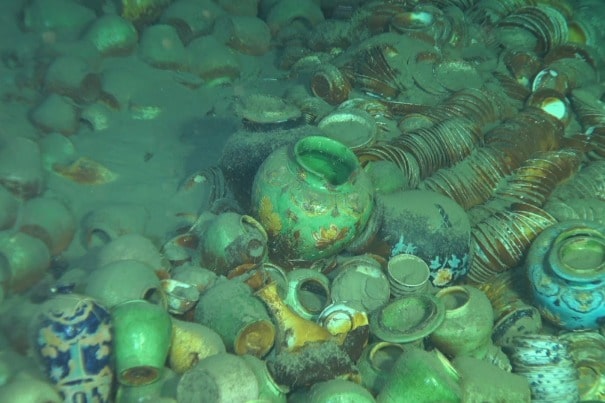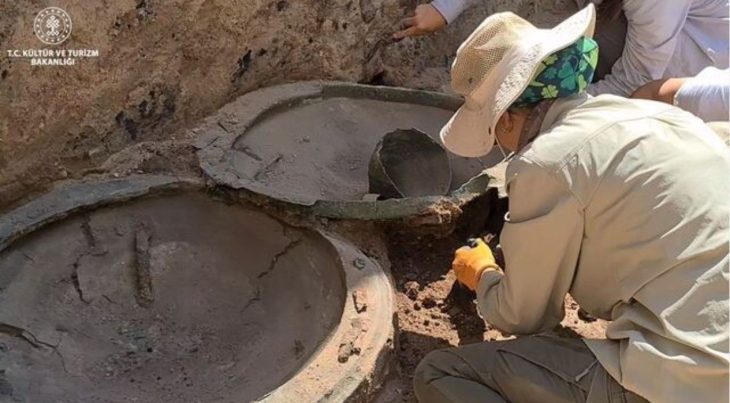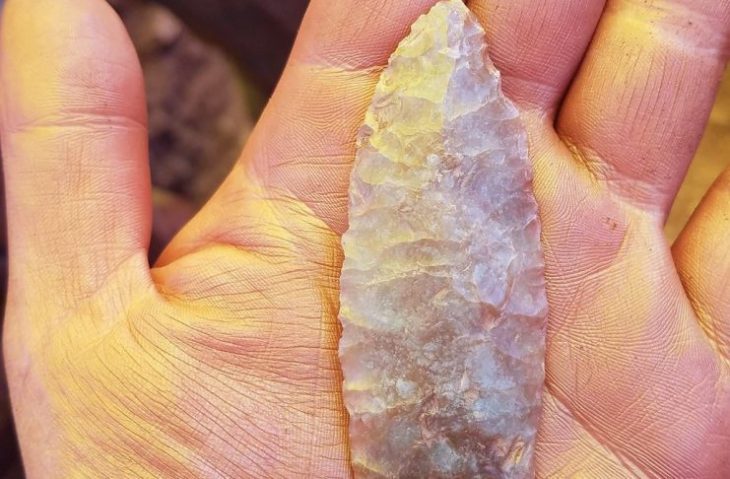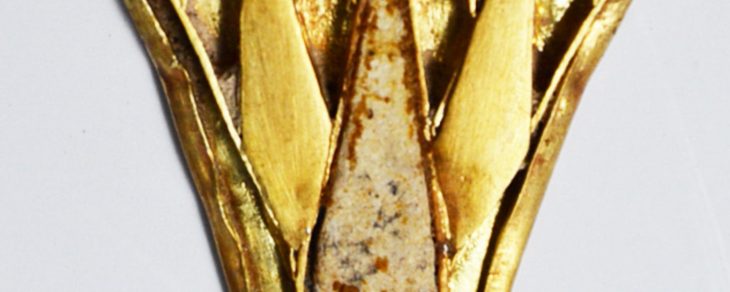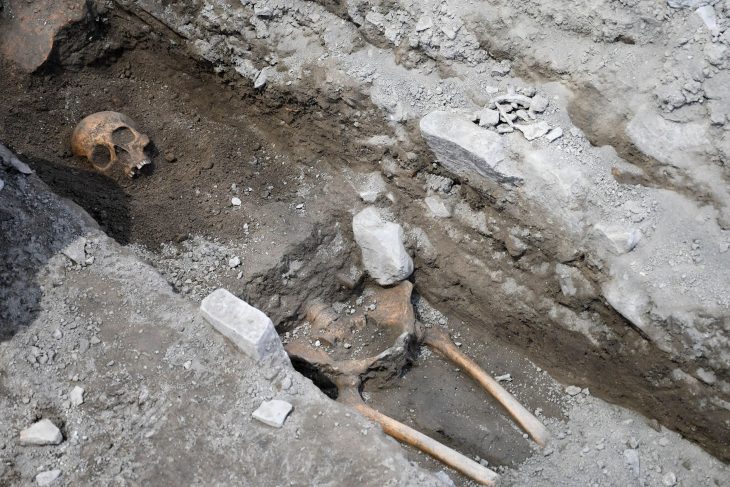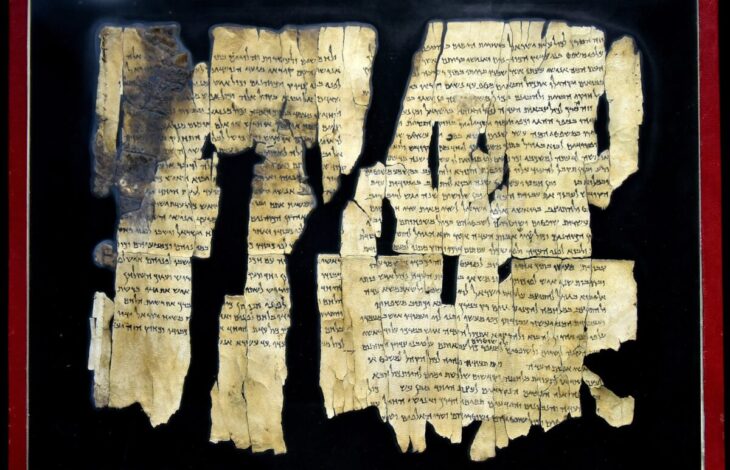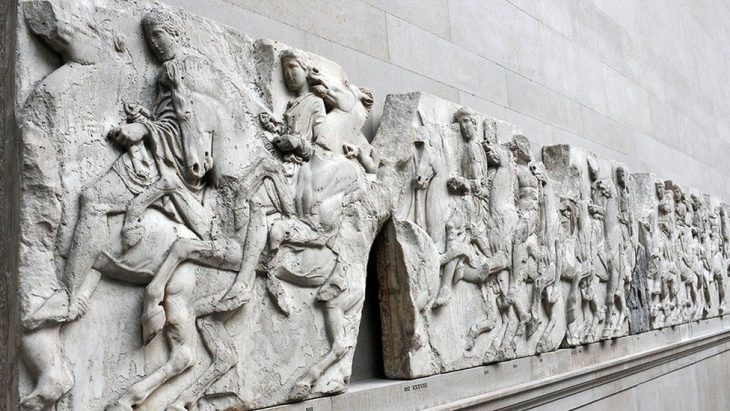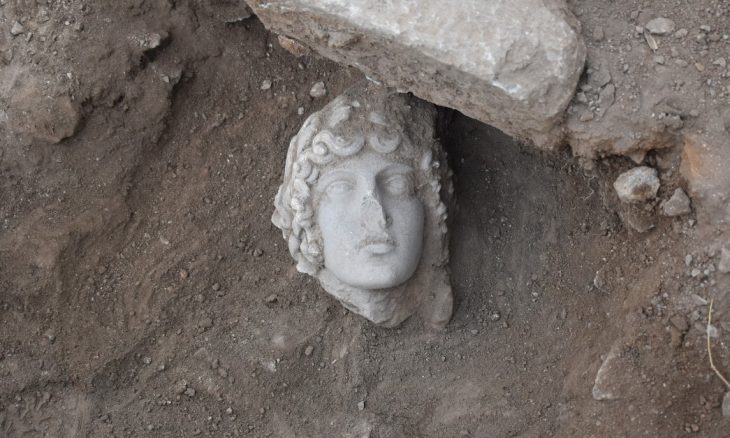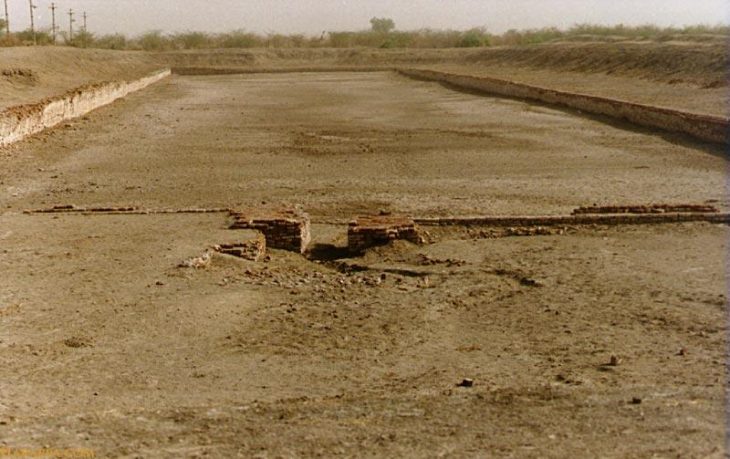A heist at the Drents Museum in Assen, Netherlands, has resulted in the theft of several invaluable artifacts from the “Dacia – Land of Gold and Silver” exhibition, which showcased ancient Dacian treasures loaned from Romania. Among the stolen items are the renowned golden Helmet of Coțofenești, dating back to 450 BC, and three royal Dacian bracelets.
The golden Helmet of Coțofenești epitomizes the Thracian culture’s remarkable artistry and exceptional craftsmanship. Discovered in 1929 by Traian Simion in the village of Poiana Coțofenești, Romania, the helmet has undergone extensive analysis by experts, revealing that it weighs approximately 1 kilogram. Detailed examinations suggest that the helmet likely belonged to the Geto-Dacian tribe, renowned for their intricate designs featuring triangles, spirals, strips, and rosettes.
Details of the Incident
Local police responded to reports of an explosion at the museum in the early hours of Saturday, January 25, around 3:45 AM. Upon arrival, officers discovered that the suspects had used explosives to breach a reinforced door. The targeted exhibition featured over 600 artifacts, including gold and silver treasures from the Dacians, an ancient civilization that thrived in modern-day Romania over 2,000 years ago.
Surveillance footage captured three individuals entering the premises and breaking into display cases housing the artifacts. The explosion caused damage to the museum’s building and nearby properties, but no injuries were reported. A burned-out vehicle was found 30 minutes later near the N33 motorway, approximately seven kilometers from the museum. Authorities believe this car was used as a getaway vehicle before the suspects switched to another mode of transport.
The Stolen Artifacts
The most significant loss from the heist is the golden Helmet of Coțofenești, an exquisite artifact made from one kilogram of pure gold. This helmet, a highlight of the exhibition, is believed to have been used by Dacian nobility and was loaned to the Drents Museum by the National History Museum of Romania in Bucharest. Additionally, three gold bracelets from the Dacian royal collection were taken. These artifacts, along with the helmet, symbolize the Dacians’ advanced metalworking skills and their wealth derived from the gold-rich Transylvanian Ore Mountains.
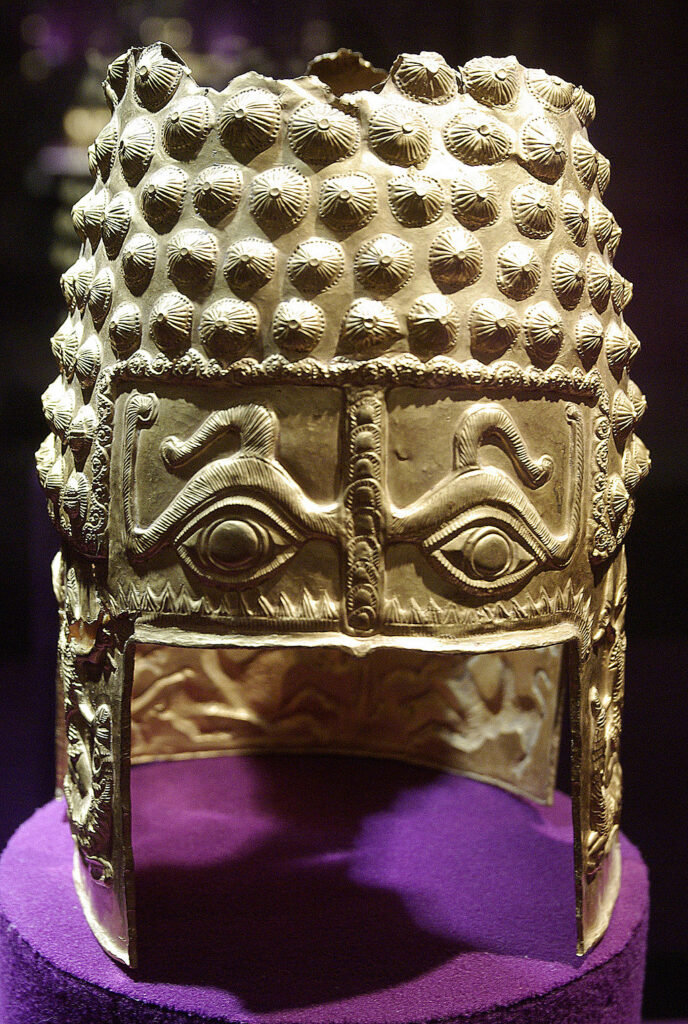
The heist has elicited strong reactions from Dutch and Romanian officials. Harry Tupan, Director of the Drents Museum, described the incident as “a dark day for the museum and our Romanian colleagues,” noting that in the museum’s 170-year history, it had never experienced such a significant crime. Marco Out, the Mayor of Assen, expressed shock, stating, “This is something you never want to happen as a museum, a city, or a province.” He confirmed that multiple government bodies, including the Dutch Ministry of Foreign Affairs, are now involved in the investigation.
Romanian Foreign Minister Emil Hurezeanu held discussions with his Dutch counterpart, Caspar Veldkamp, to emphasize the cultural and symbolic significance of the stolen pieces. Hurezeanu described the heist as having a “profound emotional impact” in Romania and assured that Romanian embassies in neighboring countries had been alerted to assist in recovery efforts.
Dutch authorities have activated cross-border cooperation mechanisms and involved Interpol in the search for the stolen treasures.
Security and Circumstances
The exhibition, which opened in July 2024 and was scheduled to close on January 26, 2025, was highly regarded for its display of artifacts on loan from 15 Romanian institutions. However, questions are now being raised about security measures, particularly regarding the decision to house the artifacts in a building with an exterior wall that reportedly allowed the thieves direct access to the display cases. Ernest Oberländer-Târnoveanu, Director of the National History Museum of Romania, confirmed that Romanian staff were scheduled to begin packing the artifacts for their return on Sunday, just days before the collection was due to be transported back to Romania.
Appeal for Assistance
Dutch police are urging anyone with information to come forward, especially those who may have witnessed unusual activity at the museum or around the stolen artifacts. The public is also encouraged to report any attempts to sell the items on the black market. The Drents Museum remains closed while investigators examine the scene. In a statement, the museum expressed its full cooperation with authorities and hope that the stolen treasures will be recovered.
The theft of the Helmet of Coțofenești and other Dacian artifacts is a significant blow to efforts to preserve and showcase the cultural heritage of ancient civilizations. These items not only represent historical craftsmanship but also serve as symbols of Romanian identity and history.
Cover Image Credit: CC BY-SA 3.0view terms

